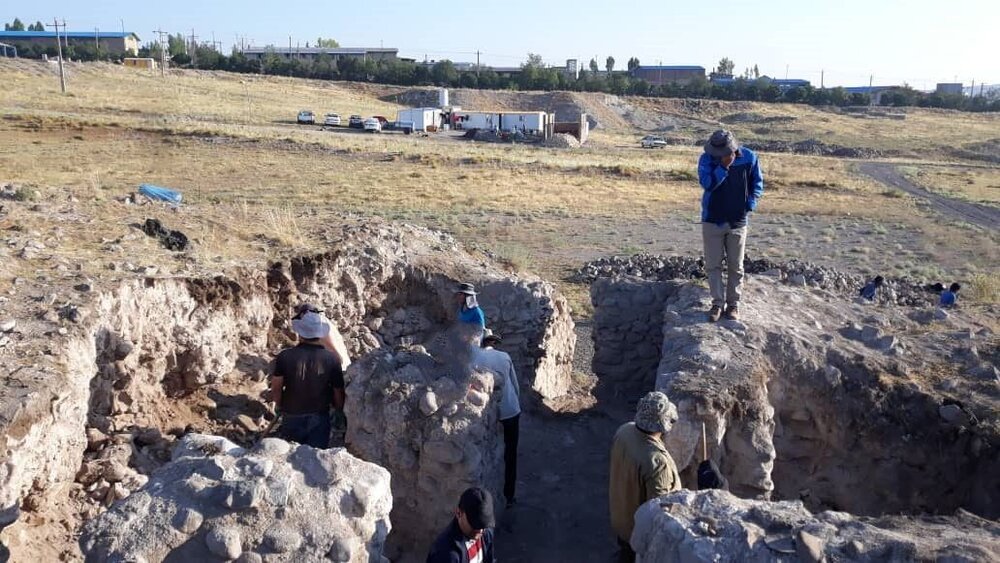Archaeologists search for lost traces of Ilkhanid settlements in Ojan

TEHRAN - Archaeologists have begun searching for more traces of the Ilkhanid heritage in the ancient city of Ojan in northwestern Iran.
A team from the University of Tehran is trying to fill the gaps between the written records and archaeological findings in the ancient city, which is located in the Bostanabad district of East Azarbaijan province.
"This is the fifth archaeological season conducted in Ojan... In this season, we will excavate the historic castle of Ojan and remove the debris from it," IRNA quoted a local official as saying on Thursday.
Early buildings in Ojan date back to the 5th-6th centuries AH and coincided with the Seljuks. Later, the city was an administrative center of the Ilkhanids in the 7th-8th AH centuries and experienced its heyday until the late Safavid period.
Surviving architectural structures include square-shaped battlements, a government castle, some surveillance towers, enclosed walls, incised underglaze clays, underglaze paintings, and local clays without glaze from the 6th-8th centuries.
The Ilkhanid dynasty, also called Il-Khanid, was a Mongol dynasty that ruled Iran from 1256 to 1335. Il-Khan is Persian for "subordinate khan".
Hulegu, a grandson of Genghis Khan, received orders from the supreme Mongol chieftain Mongke to conquer Iran. Hulegu set out around 1253 with a Mongol army of about 130,000 men. He founded the Il-Khanid dynasty in 1256 and conquered Baghdad and all of Iran by 1258, according to Britannica.
The Il-Khanids consolidated their position in Iran and unified the region as a political and territorial entity after several centuries of fragmented rule by small dynasties. During the reign of the Il-Khanid Maumud Ghuzun (r. 1295-1304), the Il-Khanids lost all contact with the remaining Mongol chiefs in China. Mahmud Ghuzun himself embraced Sunni Islam, and his reign was a time of Iranian cultural renaissance in Iran, with scholars such as Rashid al-Din flourishing under his patronage.
Ghazan's brother Oljeitu (r. 1304-16) converted to Shia Islam in 1310. Oljeitu's conversion caused great unrest, and when he died in 1316, the civil war was imminent. His son and successor, Abu Sa'id (r. 1317-35), converted to Sunni Islam and was thus able to prevent a war.
During Abu Sa'id's reign, however, factional disputes and internal unrest continued to spread. Abu Sa'id died without leaving an heir, and with his death, the unity of the dynasty was broken. Thereafter, various Il-Khanid princes ruled parts of the dynasty's former territory until 1353.
AFM
Leave a Comment